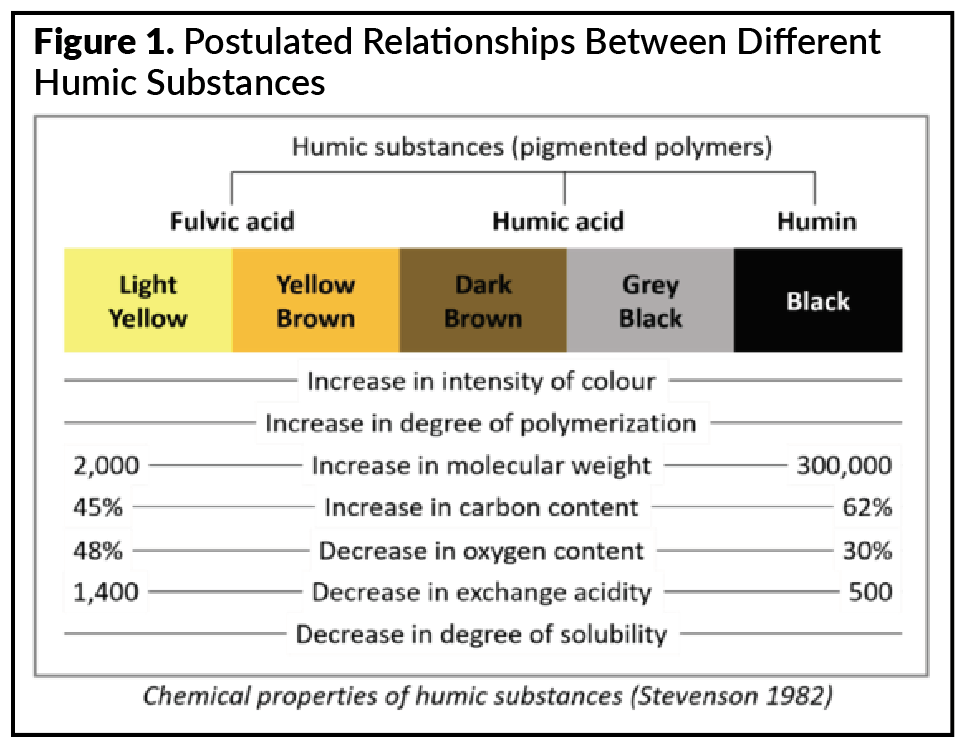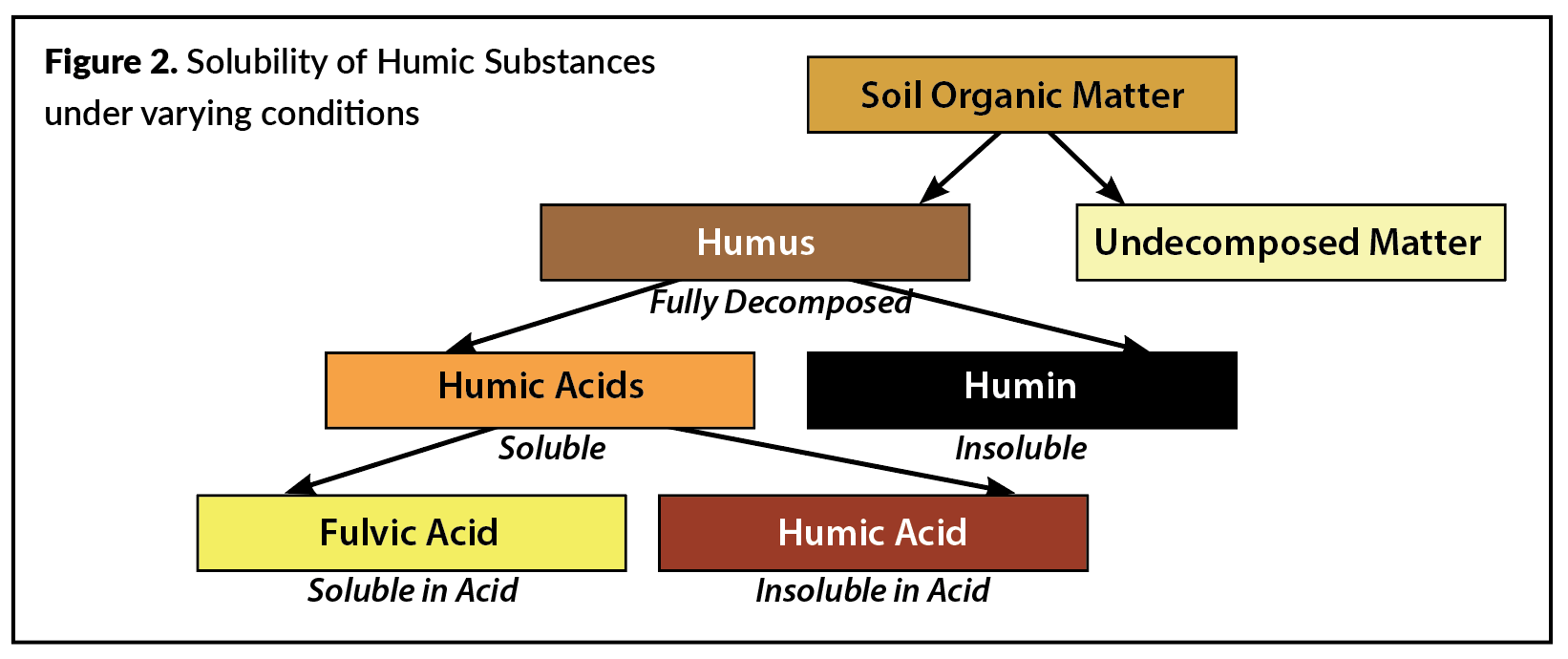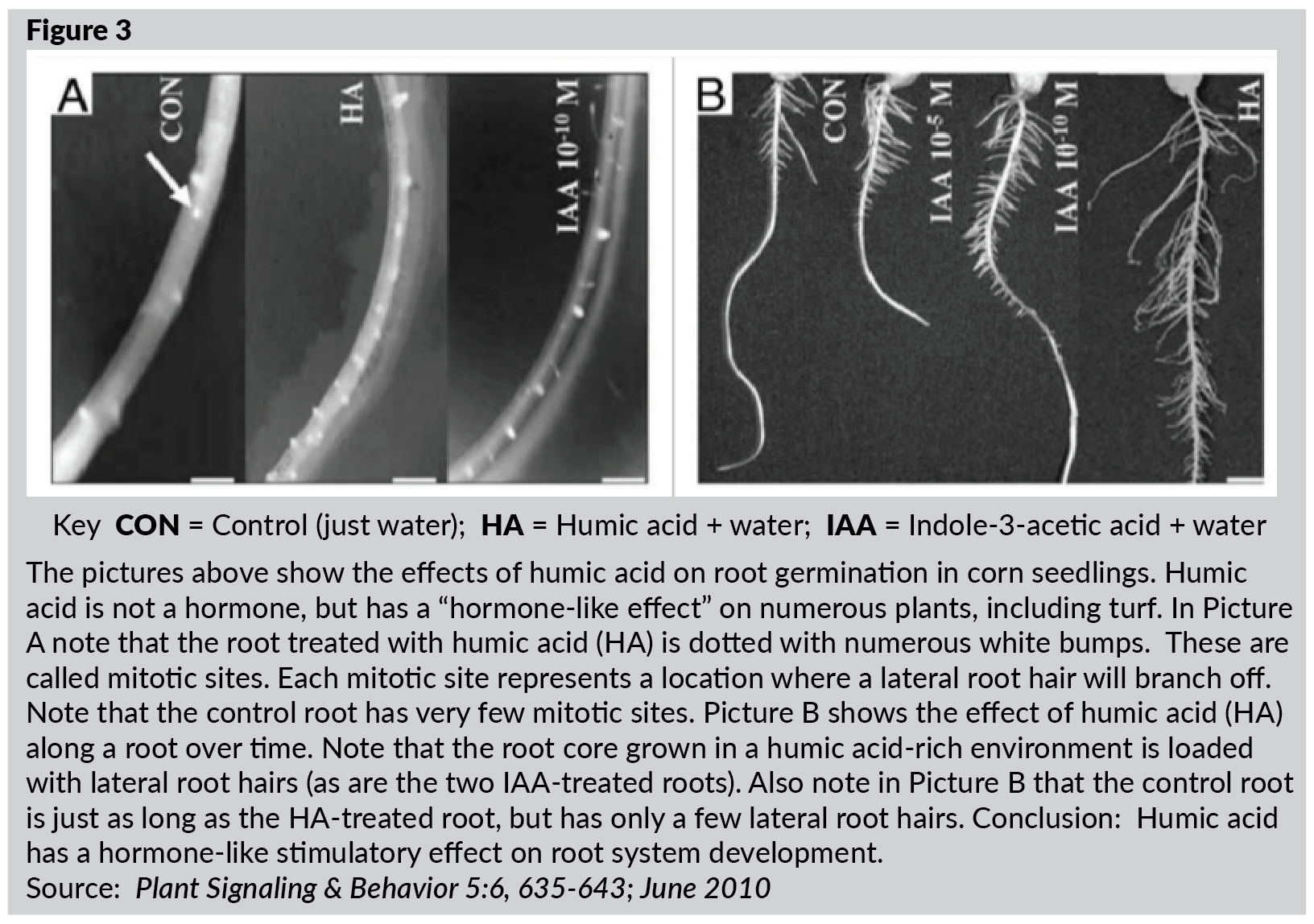THE SCIENCE BEHIND HUMIC SUBSTANCES
Did you know not all humic substances are alike? The category of “humic substances” represents a large variety of humic compounds with very different properties. Some humics are beneficial; others have little or no benefit to plants. Did you know that most states don’t require manufactures of
fertilizers
and
soil amendments
to tell you which kinds of humic substances are inside their products? Don’t be fooled into purchasing humic-based products that don’t work! Learning the basic science behind humic substances will give you the tools you need to understand which humic-based products have the most value.
WHAT ARE HUMIC SUBSTANCES?
Humic substances are the organic components of soils. Humics are comprised of phenols, lignins, lipids, sugars, esters, quinones and other mild organic acids. They are essentially the biodegraded remains of plant matter due to microbial activity. Humic substances represent the furthest state of decomposition of organic material in the soil.
WHERE DO HUMIC SUBSTANCES COME FROM?
Humic substances come from composting vegetation, peat bogs, manure, and sapropels (organically rich sediments found at the bottom of a river, lake, or marine water body). These humics are considered “short-term processed humics” because the amount of time it takes to biodegrade vegetative tissues in these environments is relatively short (only a few months to a few thousand years). Humic substances can also be found in much higher concentrations in lignite, leondardite, and brown coal. These humics are considered “long term processed humics” because the biodegradation process typically takes place over millions of years. Long term processing of humic substances is enhanced by heat and pressure.
HOW ARE HUMIC SUBSTANCES PROCESSED?
Before humic substances can be applied to the soil, they must first be extracted and purified. Humics may be processed one of two ways: chemically or biologically. Most humic substances are chemically extracted from lignite or leonardite ore via a series of acid and base reactions. The end product is very pure, but the use of caustic chemical reagents makes this process environmentally unfriendly. Chemically processed humics substances typically have a moderately high pH (9-10 avg).
Conversely, biologically processed humic substances are extracted using common soil microbes. With this method, plant material is broken down in a series of biological reactors in a controlled, industrial environment. Biologically processed humic is an environmentally friendly process and has the added benefit of generating a product with a near neutral pH.
WHICH KINDS OF HUMIC SUBSTANCES ARE BENEFICIAL?
When it comes to humic substances, molecule size and solubility are the two largest factors that determine how beneficial humics are to plants. A typical fraction of humic substances found in nature is divided into 3 components: fulvic acids, humic acids, and humins. These compounds are listed in order of molecular size from smallest to largest (see Figure 1). In general, fulvic acids are the most biologically active and beneficial to plants. Smaller size humic substances (such as fulvic acids) tend to be more soluble and lighter in color. Fulvic acids have one more benefit over humic acids and humins; they are soluble in both acidic and alkaline soils. Humic acids are almost as beneficial as fulvic acids except they slightly larger in size, darker in color, and only soluble in alkaline soils. Humins have the largest molecular size of all humic substances. Unfortunately, they provide little value as a soil amendment. Humins are extremely dark, have a thick mud-like texture in water, and are completely insoluble at any pH (see Figure 2).





















